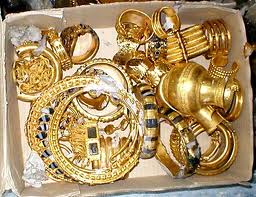كلية روبرت الأمريكية في استنبول عام 1958
طلاب الهندسة المدنية العراقيين
من آرشيف فاروق سعد الدين زيادة
From the Archives of Faruq Ziada
من اليمين الى اليسار : سمير يوسف زينل ، فاروق سعد الدين زيادة ، نوفل جميل البيك ، محمود سلمان سبتي ، عبد المجيد إسحاق المعتوق ، عبد الإله مكية
ملاحظة 1 : الشخص الجالس في آخر الصورة الى اليسار غير معروف . نأمل أن تزودونا باسمه إن عرفتم
ملاحظة 2 : التقطت الصورة في مطعم نظمي على شارع الباسفور في منطقة بيبيك/ استانبول
From Right to Left: Sameer Yousif Zaynel, Faruq Ziada, Nowfel Jameel Al-beik, Mahmood Salman Sabti, A. Majeed Al-Matooq, Abdil Ilah Makkiya
Note 1: The person sitting to the extreme left of the picture is unknown.
Note 2: The picture was taken at Nathmy Restaurant in the Bebek area of Istanbul.
السيرة الذاتية للأشخاص الظاهرين في الصورة
سمير يوسف زينل :ا
كان من الطلبة المتفوقين في كلية بغداد وكان يحب المغامرات . ترك روبرت كوليج بعد إكمال الصف الثاني في الهندسة المدنية عام 1958 وانضم الى القوة الجوية العراقية . وفي الحرب مع اسرائيل عام 1967 أسقط بطائرته هوكر هنتر طائرة اسرائيلية واصبح بطلا طيارا . استشهد في حرب تشرين بتاريخ 10/14/ 1973 في جبهة الجولان السورية عندما أصيبت طائرته بصاروخ اسرائيلي .ا
Sameer Yousif Zainel was a top student at Baghdad College and loved adventures. He left Robert College in 1958 after
completing the second year (sophomore) in civil engineering and joined the Iraqi Air
Force. In the 1967 war with Israel, while flying his Hawker Hunter airplane, he shot down an Israeli airplane and was awarded for his distinguished service. He was killed in the October Arab-Israeli war on 14/10/1973 at the Syrian
Golan front-line when his plane was hit by an Israeli missile.
فاروق سعد الدين زيادة :ا
ترك روبرت كولِج عام 1959 وأكمل دراسته في الولايات الأمريكية . غيّر دراسته من الهندسة المدنية عام 1960 الى العلاقات الدولية . شارك في امتحان وزارة الخارجية في كانون الأول (ديسمبر) 1964 وكان الأول على العراق ثم عُيّن ملحقا دبلوماسيا في 14 آب 1965 وتدرج في السلك الخارجي حتى اصبح سفيرا عام 1993 . أحيل على التقاعد عام 2005 . يسكن في لندن .ا
Faruq S. Ziada: Left Robert College in 1959 and
completed his studies in the United States. He changed his studies from civil
engineering in 1960 to international relations. Faruq participated in the foreign
ministry exam in December 1964, and received the highest honors in Iraq. Then he was appointed a
diplomat on August 14, 1965, and worked in the Foreign Service
until he became an ambassador in 1993. He retired in 2005. Currently lives
in London.
نوفل جميل البيك :ا
درس الثانوية في كلية بغداد وبعدها دخل مع فاروق زيادة وسمير زينل كلية روبرت عام 1956 وتخرج مهندسا مدنيا ثم أخذ الماستر من الولايات المتحدة واصبح مهندس مقاولات معروف . غادر بغداد في التسعينات الى الإمارات العربية ثم بعد تقاعده سكن في كندا .
Nowfel Jameel El-Baik: Studied high school at Baghdad College, and then he attended, with Faruq Ziada and Sameer Zainel, Robert College, in 1956. He graduated from civil engineering, then completed a master’s degree from the United States and became a well-known contracting engineer. He left Baghdad in the 1990s for the United Arab Emirates and after his retirement, he left for Canada where he currently lives.
محمود سلمان سبتي :
تخرج من كلية روبرت عام 1959 متخصصا في الهندسة المدنية ، وبعد اشتغاله في العديد من مشاريع الري والجسور والسدود في الكوت والناصرية والعمارة وبغداد توقف عن العمل الهندسي في عام 1980 ليشتغل مع زوجته في تأسيس معمل للحفاظات المتطورة . في السبعينات كان أحد مقاولي مشروع السدود في الكحلاء والمشرح بمدينة العمارة . ترك العراق الى لندن في عام 2000 وتوفي فيها بتاريخ 24 /7 /2006 .
Mahmood Salman Sabti: Graduated from Robert College in
1959 specializing in civil engineering, and after working on several projects in irrigation, bridges and dams in Kut, Nasiriyah, Amara and Baghdad, he retired from engineering work in 1980 to work with his wife in establishing a factory for diapers. In the 1970s he was one of the contractors working on the dam
project at Al-Kahla and Al-Msharrah in Amara city. He left Iraq for London in 2000 and died there on 24/7/2006
عبد المجيد إسحاق المعتوق :
التحق بكلية روبرت عام 1955 وتخرج منها حاصلا على شهادة بكلوريوس الهندسة المدنية في حزيران 1959 . بعد التخرج عاد الى العراق حيث خدم ضابط احتياط في الجيش حوالي أربع سنوات ثم اشتغل في مشروع جسر الفلوجة (1964-1966) وبعدها اشتغل بمشاريع هندسية عديدة في الحلة وبغداد والكويت . سكن في ألمانيا منذ عام 2007 وتوفي فيها بتاريخ 16 تشرين الثاني 2019 .
A. Majeed Al-Matooq: Attended Robert College in 1955
and graduated with a degree in civil engineering in June 1959. After graduation,
he returned to Iraq, where he served as a reserve officer in the army for about
four years, then worked on the Fallujah Bridge Project (1964-1966) and then
worked on several engineering projects in Hilla, Baghdad, and Kuwait. He's been living in Germany since 2007 until he died on November 16, 2019.
عبد الإله مكية : توفي قبل سنوات . نأمل تزويدنا بتاريخ وفاته ومختصر سيرته الذاتية
حوار مع عبد المجيد المعتوق بخصوص روبرت كولج وسيرته الذاتية
Abdul Majeed Al-Matooq Speaking about Robert College, Istanbul
عبد المجيد المعتوق في حديث عن صديقه محمود سلمان
Abdul Majeed Al-Matooq Speaks about His Friend, Mahmood Salman
ملاحظة : الرجاء الإنتباه الى المقالة المتواجدة في السيرة الذاتية لسمير يوسف
زينل أعلاه والتي فيها ذكر لحربي حزيران وتشرين .ا
نكون شاكرين لمن يبعث بنسخة من الكتب السنوية للمتخرجين من هذه الكلية التي
درس فيها العديد من العراقيين . ماهو العدد الكلي للعراقيين الذين درسوا فيها طوال
الخمسينات والستينات؟

